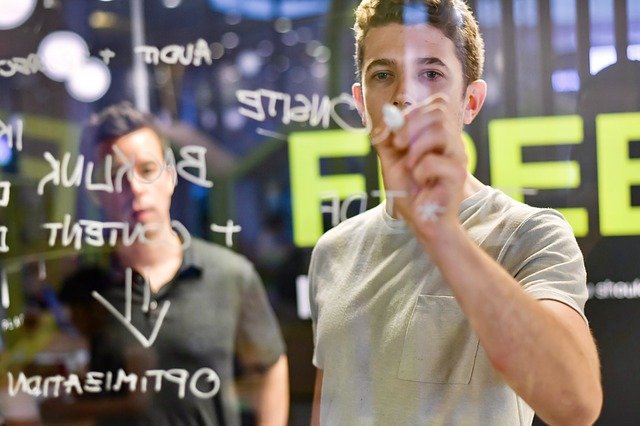As video content continues to dominate social platforms, campus culture videos are proving to be one of the most effective tools in educational marketing, helping schools differentiate themselves in a crowded market while strengthening emotional engagement and driving enrollment decisions.

In 2025, where trust is currency and attention is fleeting, education marketing is undergoing a profound shift. Prospective students no longer rely solely on institutional websites or glossy brochures.
They seek real voices, honest experiences, and emotional resonance. Enter campus culture videos—raw, unscripted, and deeply human. These videos, often created by students themselves, offer a candid look into campus life, capturing everything from dorm room banter to midnight library sessions.
For universities striving to build genuine connections with digital-native generations, these videos have become the cornerstone of an effective education marketing strategy.
The demand for authenticity in higher education marketing has never been higher. According to a 2024 report by Think with Google, 85% of Gen Z students say they trust peer-generated video content more than official university communications.
These insights aren’t just interesting—they’re actionable. Institutions now recognize that marketing for education must reflect lived experiences, not curated narratives.
As video content continues to dominate social platforms, campus culture videos are proving to be one of the most effective tools in educational marketing, helping schools differentiate themselves in a crowded market while strengthening emotional engagement and driving enrollment decisions.
Behind the Scenes Beats the Brochure
Highly produced videos still have their place in higher education digital marketing, especially for brand positioning and international reach.

However, the most impactful content in 2025 isn’t the one with the best production value—it’s the one that feels real. Students today are drawn to unfiltered, behind-the-scenes glimpses of campus life.
These authentic snapshots help them visualize their future and make emotionally driven decisions. Platforms like Instagram Reels and YouTube Shorts have become hotspots for these micro-moments, giving prospective students a sneak peek into the rhythms of college life.
For example, the University of Toronto saw a 43% increase in international student inquiries in Q1 2024 after student-led Instagram Stories showcasing dorm tours, campus cafés, and club nights went viral.
These were not institutional campaigns. They were organic, intimate, and imperfect—and that’s what made them powerful. It’s a shift away from traditional education marketing strategies and toward immersive storytelling.
This trend highlights a growing understanding within the marketing in education industry: storytelling, not selling, is the future. By embracing spontaneity, institutions tap into the emotional fabric of decision-making.
It also underscores the new imperative for SEO for higher education—optimizing for discoverability of this peer-generated content across platforms. These moments are redefining educational marketing not by what they show, but by how they make prospects feel.
Peer-Generated Narratives Are the New Student Ambassadors
In an era where digital influence is everything, today’s students don’t just consume content—they create it. This creator-driven landscape is transforming the education marketing strategy of leading institutions.

Instead of relying solely on trained student ambassadors or official spokespeople, colleges are empowering everyday students to share their experiences.
These narratives, captured through day-in-the-life vlogs or candid dorm room conversations, carry far more credibility than scripted testimonials.
A recent 2024 survey by EAB shows that 76% of prospective undergraduates prefer hearing directly from current students via platforms like TikTok or Instagram rather than reading official marketing copy.
It’s peer-generated trust, not top-down messaging, that now fuels enrollment intent. For example, the University of Melbourne launched a program encouraging students to share weekly video journals on TikTok with the hashtag #MelbLifeUnfiltered.
The result: a 52% engagement increase with high-school-age audiences and a 28% boost in organic traffic to their admissions page.
This signals a broader evolution in education and marketing: students are no longer passive consumers but active participants in brand storytelling.
Smart education marketing strategies are investing in training, incentivization, and editorial support for these content creators while ensuring their voices remain genuine.
It’s a dance between structure and spontaneity that allows education in marketing to evolve with cultural shifts. Peer-driven content isn’t a tactic anymore—it’s the new foundation.
Emotional Transparency Builds Trust, Not Just Traffic
Most institutions have long focused on aspirational marketing in education, emphasizing achievements, infrastructure, and prestige.

But today’s students are equally interested in mental health resources, diversity, community dynamics, and how it feels to belong. Campus culture videos that explore these less-polished realities are building more than visibility; they’re building trust.
Take, for instance, a 2024 campaign by the University of British Columbia that featured unscripted interviews with students discussing academic burnout, financial pressure, and homesickness.
Instead of hiding these realities, the videos acknowledged them while highlighting supportive campus resources. Engagement on YouTube and LinkedIn doubled within weeks, and the campaign contributed to a 17% increase in student mental health service inquiries—showing that the content did more than inform; it activated.
This approach aligns with a shift in higher education marketing where transparency is valued over perfection. Real emotion drives real engagement. In fact, Google Search data from March 2024 shows a 33% rise in queries related to “college mental health support” and “student community vibes.”
Educational marketing teams now realize that the emotional texture of campus life is a differentiator. Institutions prioritizing mental health, inclusion, and empathy in their education marketing strategy are seeing stronger yield rates.
These videos serve not just as promotional material but as emotional contracts, communicating safety, care, and culture.
Algorithm-Friendly, Budget-Savvy, and Viral-Ready
The economics of video production have changed dramatically. With smartphones, editing apps, and social platforms optimized for vertical content, campus culture videos are now incredibly cost-effective.

More importantly, they align perfectly with how prospective students are consuming content in 2025. According to a 2024 Meta report, 82% of students researching colleges use Instagram Reels and TikTok as their primary discovery tools.
This is where SEO for higher education intersects with creative strategy. Universities are starting to optimize short-form video content with searchable hashtags, geo-tags, and student-focused keywords, improving their visibility not just on social media but also on Google Discover and YouTube search.
The University of Amsterdam’s “Study in AMS” TikTok series, shot entirely by students, generated over 2.1 million organic views within two months and contributed to a 21% increase in international applications.
From an ROI perspective, this shift is massive. Educational marketing teams are rethinking media budgets to accommodate micro-content creation, incentivizing student creators, and training staff in agile content workflows.
The best part?
These videos don’t need elaborate setups or production crews. Authenticity is the production value.
It’s a winning trifecta for marketing for education: budget efficiency, viral potential, and platform-native formats. As traditional ads decline in effectiveness, these nimble, authentic clips offer a more direct path to relevance and reach.
Cultural Fit Over Campus Tour
Virtual tours still hold value, but they only offer a curated, often sterile view of the campus. Culture, however, can’t be captured in a 360-degree walkthrough—it has to be felt.

Campus culture videos offer prospective students an emotional preview of life beyond academics. They act as a “fit check,” helping students evaluate whether they belong.
A study by Chegg Research in January 2024 found that 61% of students who dropped out within their first year cited “misaligned expectations about campus culture” as a major factor.
When institutions use real-life campus culture videos to showcase traditions, student interactions, and lifestyle nuances, they provide better signals for cultural alignment.
Consider the example of NYU Abu Dhabi, which launched a video series exploring student traditions like Cultural Nights, late-night debates, and sports tournaments. These weren’t just flashy highlights; they revealed values, diversity, and interpersonal energy.
The university saw a 39% reduction in admissions-related attrition in 2024, pointing to better student-program matches.
This shift illustrates a powerful insight in higher education marketing: emotional alignment reduces churn. These videos are not just recruitment tools; they are filters, allowing the right students to find the right fit. That’s the new role of marketing in education industry—not just attraction, but alignment.
Admissions Teams as Story Curators, Not Just Marketers
Admissions departments are no longer gatekeepers of polished brochures. In today’s digital-first world, they are becoming content curators, brand storytellers, and strategy leads for community engagement.

With the rise of campus culture videos, admissions professionals are rethinking their roles, moving from control to collaboration.
University of Edinburgh’s 2024 initiative, “Student Stories Lab,” is a case in point. Admissions staff partnered with a cohort of students to co-create video content that aligned with core brand values.
They offered narrative guidance without scripting, ensuring authenticity while staying on message. Applications from underrepresented backgrounds rose by 22% in the next cycle, validating the approach.
This model is reshaping education marketing strategies. Rather than outsourcing campaigns, teams are building internal ecosystems that foster student-led creativity.
Digital literacy, content moderation, and community management are now key skills in education and marketing departments.
Importantly, this approach enhances search visibility too. When these videos are embedded across admissions pages, optimized with metadata, and circulated through social feeds, they boost both SEO for higher education and user engagement. It’s a new era of collaborative storytelling where the student voice drives narrative authority.
Conclusion
The rise of campus culture videos isn’t a passing trend. It’s a fundamental evolution in educational marketing, driven by the needs and expectations of a new generation.
These videos bridge the trust gap, transform perceptions, and humanize institutions in ways traditional marketing never could. They empower students to become storytellers, allowing universities to communicate through lived experience, not scripted slogans.
As the lines between education and marketing blur further, authenticity will remain the decisive factor in a student’s journey from curiosity to commitment.
From SEO to social strategy, campus culture videos offer a multidimensional impact across the funnel. For institutions ready to embrace emotional honesty, student collaboration, and algorithm-friendly content, the payoff is clear: stronger engagement, better alignment, and sustained enrollment growth.
So, the question is no longer whether to invest in campus culture videos. The real question is: Are you ready to let your students become the voice of your brand?



Pingback: Ethical Storytelling Should Be the Future of Education Marketing
Pingback: Ultimate Guide to Higher Ed SEO: Rank Your Website in 2025
Pingback: The Rise of Gamification in Higher Education Marketing
Pingback: Why Educational Marketing Needs a Privacy Revolution?